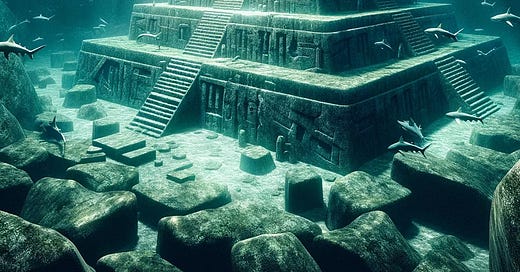Tucked away in the blue embrace of the Pacific, near the southernmost fringes of Japan's Ryukyu Islands, lies a submerged wonder - the Yonaguni Monument. Discovered in 1985 by a diver in search of a good spot to observe hammerhead sharks, this site swiftly transformed from a marine curiosity to a hotbed of archaeological debate. Picture, if you will, a collection of sandstone and mudstone formations, with the largest standing at about 90 feet tall and 500 feet long.
The Yonaguni Monument is like a giant jigsaw puzzle, submerged in the ocean. Its features include terraces, steps, and what seem to be carved platforms and pathways. The precision of these structures, some argue, is too intricate to be the work of Mother Nature's unguided hands. Advocates of the artificial origin theory, like Professor Masaaki Kimura from the University of the Ryukyus, assert that the monument could be remnants of a 10,000-year-old civilization, potentially linked to the mythical lost continent of Mu.
But here's the twist in the tale - not everyone is convinced. Skeptics, waving the flag of geological processes, suggest that the structures are nothing more than natural formations, sculpted by millennia of currents, earthquakes, and erosion. They argue that what we see as steps and terraces are simply the result of the natural cleaving of the rock, a common phenomenon in sedimentary layers.
So, what's the big deal? Why does the Yonaguni Monument matter in the grand scheme of things? Well, it's like stumbling upon a buried treasure chest in your backyard. If these structures are indeed man-made, they could push back the timeline of our understanding of ancient civilizations, opening the floodgates to questions about human history, technology, and cultural advancements in prehistoric times. It's a potential game-changer, challenging our narrative of the human journey.
In a nutshell, the Yonaguni Structures, whether natural or man-made, hold a mirror to our past, teasing us with questions and possibilities. They remind us that the ocean, much like a secretive librarian, has many tales hidden in its depths, waiting to be read. Whether these tales speak of lost civilizations or the artistry of natural forces, only time, research, and perhaps a bit more diving, will tell.





This reminds me of Gunung Padang in a way: fuel for conspiracists, but also potentially something groundbreaking and revolutionary.